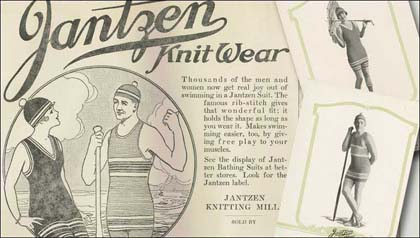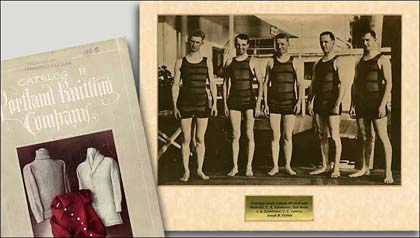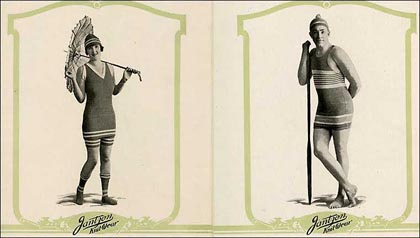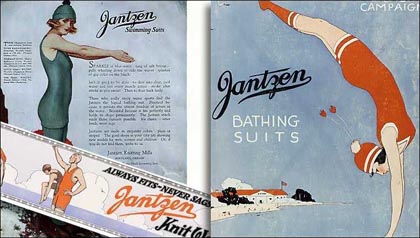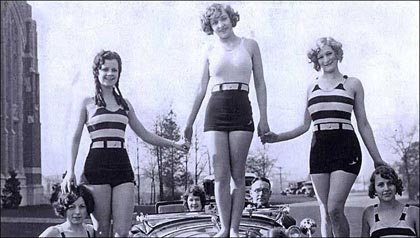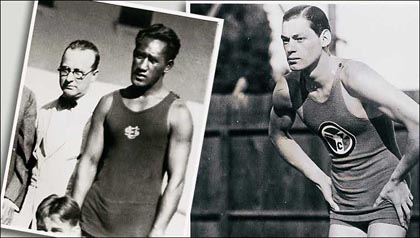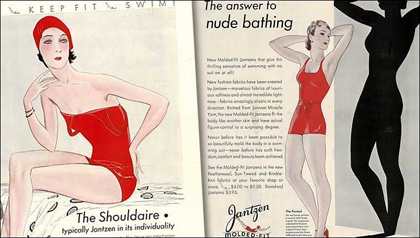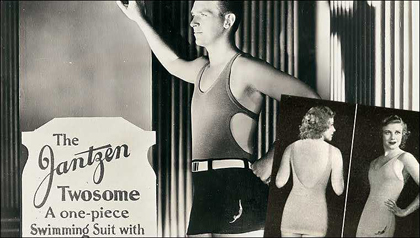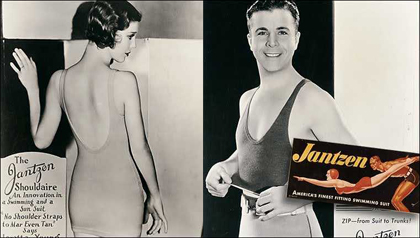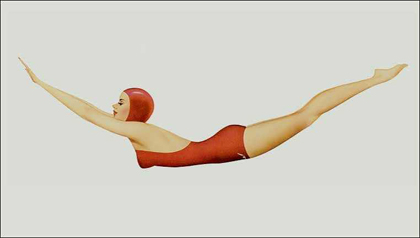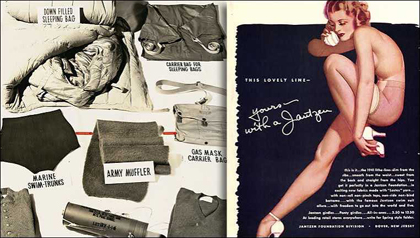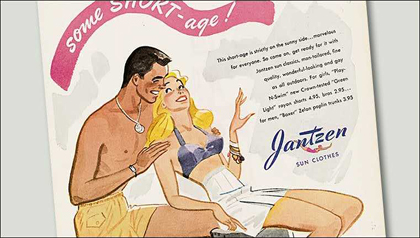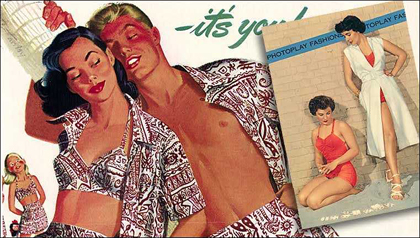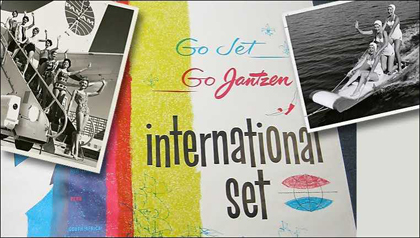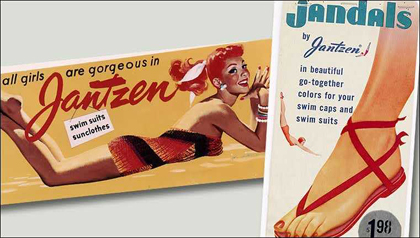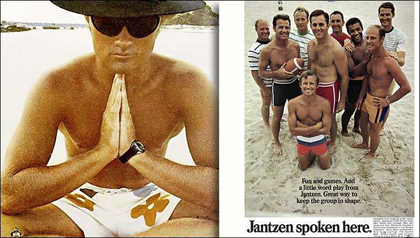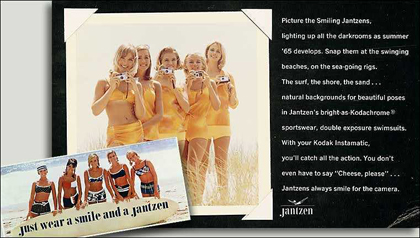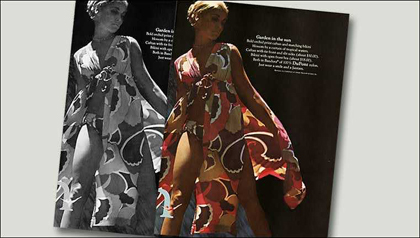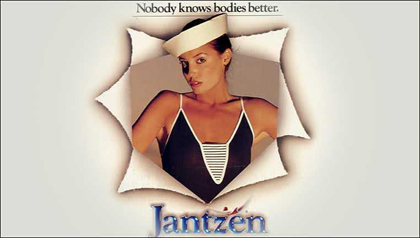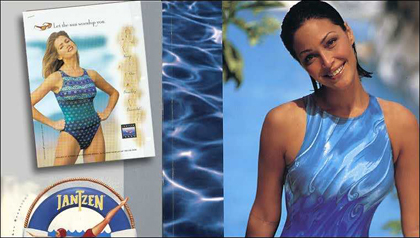The History of Swimwear

Let’s take a dive into a must-have beach staple: the swimsuit. From the Middle Ages through the 18th Century, swimming was strongly discouraged.
The term “swimsuit” was coined by Jantzen Knitting Mills in 1915. Over the next several decades, Jantzen transformed the swimwear industry, from material to design.
It all starts in Portland, Oregon. Carl Jantzen and Roy and John Zehntbauer knitted wool suits for a rowing team. They called this a “bathing suits,” later offering it in their catalog.
Consumers liked what they saw, increasing demand by 1918. Made from 100% pure virgin wool, Jantzen offered accessories to complete the outfit, like matching stockings and a stocking cap.
By 1920, billboards in San Francisco and Los Angeles promoted the swimwear. This was the decade that Jantzen’s “red diving girl” became an icon of cool, breezy summer wear across the world. In 1924, Olympians Johnny Weismuller and Duke Kahanamoku of Hawaii endorsed Jantzen.
Moving beyond necessity, swimsuits were offered in a range of colors, often changing annually.
The 1930s brought a range of celebrity endorsements, including Loretta Young and Dick Powell. Advertisements were placed in publications like Saturday Evening Post and Esquire. George Petty illustrated these ads, featuring both men and women.
This can be seen as a time when swimsuits evolved into more of a silhouette we wear today. In 1931, Jantzen figured out how to give women the option of tanning sans lines by introducing The Shouldaire. Rubberized yarn was combined into the fabric to give the swimsuit a stretchier feel, while a “molded fit” defined the bustline and helped the swimsuit stay put. At this time, rayon was combined with cotton or silk as well.
The 1940s had its highs and lows for the swimwear industry. In 1941, Jantzen expanded their scope to include active sportswear. But following the Pearl Harbor attack, the demand for commercial swimsuits sank; however, Jantzen produced them for the US military. By 1946, French women donned the bikini, forever changing the swimwear landscape.
With the 1950s came increased mobility, which means international and domestic vacations were a must. Florida was often on families’ list of hot spots, providing a wave of swimsuit wearers. Designers were still innovating in terms of material, inching toward synthetics that dried quickly. By this time, Jantzen had studios all across the world, in 18 countries.
The 1960s couldn’t have been a more perfect time for swimwear, with the Beach Boys spreading catchy tunes about surfing and lounging at the beach. In terms of marketing, partnerships emerged. One campaign urged people to smile in their swimwear, and sponsors including Kodak, United Airlines, and Ford would send winners to Hawaii.
Sophistication and versatility were key to 1970s swimwear. Cover-ups and beach skirts gave women both comfort and an additional means to show off their personal style.
The 1980s launched new swimwear silhouettes, like the strapless bandeau, while the 1990s played with patterns and colors that would improve body confidence.
In 2002, Perry Ellis purchased Jantzen. The company continues to be synonymous with swimwear. To read more about the history and how the icon has evolved, click here.

